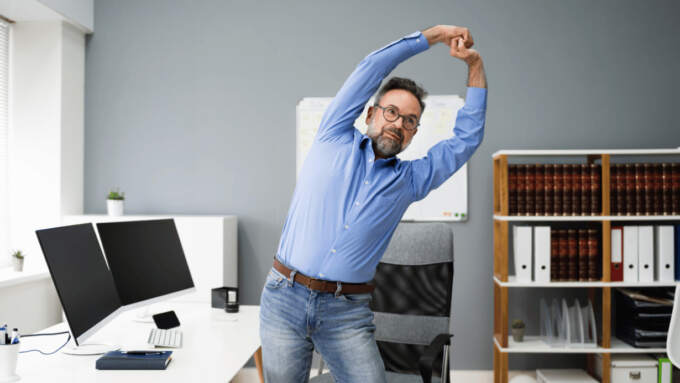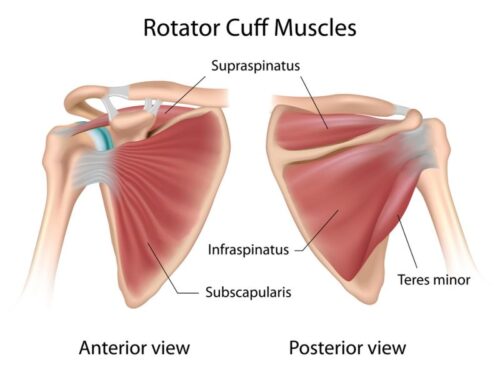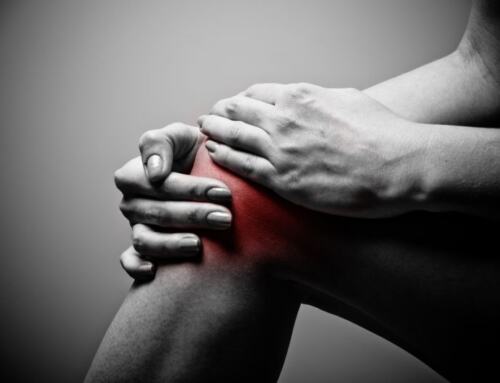Speed Up Your Recovery: Effective Techniques for Healing a Strained Lat Muscle and Stopping Mid-Back Pain While You Sleep
Strained lat muscles can be a real pain – literally. Whether it’s due to an intense workout or an accidental pull, dealing with this type of injury can significantly impact your daily activities. But fret not! In this ultimate guide, we will unveil effective techniques to speed up your recovery so you can get back to your active lifestyle in no time.
Our brand voice empowers our readers with practical and reliable advice. That’s why we’ve put together this comprehensive guide, packed with expert tips and proven methods to heal a strained lat muscle effectively.
From targeted exercises to promote healing and strengthen the surrounding muscles, to innovative therapies that speed up the recovery process – we’ve got you covered. We’ll also discuss the importance of rest and proper nutrition in supporting your muscle recovery.
Don’t let a strained lat muscle slow you down. With our ultimate guide, you’ll have all the tools you need to bounce back stronger and faster than ever before. Let’s get started on your journey to recovery!
The Latissimus Dorsi Muscle
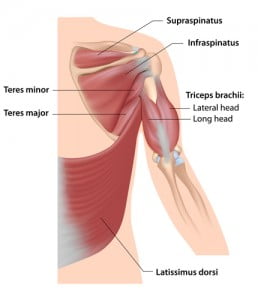
Middle Back Pain—The latissimus dorsi muscle, or “lat,” is the largest muscle in the mid back. It helps the arms move and gives the back strength. The latissimus is frequently the cause of mid-back pain when it has knots, otherwise known as trigger points. Injuries to the latissimus dorsi muscle can also cause shoulder pain, lower back pain, arm pain, and even abdominal pain.
The latissimus dorsi primarily extends, adducts, and depresses the humerus at the shoulder joint. This muscle is pivotal in freestyle swimming, hanging from a rope, executing chin-ups, and pitching a baseball.
Tight bras can induce trigger points within this muscle, and sleeping on one’s side with pressure on these trigger or tender points may exacerbate discomfort. Furthermore, poor posture can contribute to pain in the latissimus dorsi.
Symptoms of Latissimus Dorsi Pain
Because this muscle is long and slack, it rarely causes pain with motions that only partially stretch it. In fact, the trigger point is ultra-activated when you feel pain at rest from this muscle. If you can’t figure out what motion causes the pain, it probably comes from the latissimus dorsi.
Discomfort in the Latissimus dorsi can lead to pain not only in the back but also in adjacent limbs and tissues. Excessive use or overstretching may result in stiffness and unease in the upper arms, shoulders, and lower back. This strain can further trigger pain in the rhomboid muscles. [Also check the teres major]
Causes of Latissimus Dorsi Injuries
The journal Clinics and Practice states that professional athletes frequently experience Latissimus dorsi muscle tears due to injuries. Golfers, skiers, baseball pitchers and tennis players, basketball enthusiasts, and gymnasts often experience pain and discomfort in the Latissimus dorsi muscle.
The activities that can cause latissimus dorsi pain are:
- swinging a bat
- gymnastics stunts
- chopping wood
- canoeing
- swimming
- weightlifting
- rock climbing
- throwing or swinging a racket
- painting a ceiling

Latissimus Dorsi Pain Treatment – Mid Back Pain Relief
If you suspect you have pain or discomfort stemming from the latissimus dorsi muscle, there are several at-home remedies and techniques you can consider. However, consulting with a medical professional to ensure an accurate diagnosis and get guidance tailored to your specific situation is essential. Here are some general strategies for managing latissimus dorsi pain at home:
- Rest: If the pain is due to overuse or a particular activity, take a break from that activity to allow the muscle to recover.
- Cold Compress: In the initial 24-48 hours following a suspected injury, apply an ice pack to the affected area for 15-20 minutes every 1-2 hours. This can help reduce swelling.
- Heat Therapy: After 48 hours, applying heat can help relax and loosen tissues and stimulate blood flow to the area. Use a warm towel or a heating pad, but avoid direct contact with the skin to prevent burns.
- Over-the-counter pain relievers: Non-prescription medications like ibuprofen or acetaminophen can help reduce pain and inflammation. Always use as directed and ensure there are no contraindications for you.
- Stretching: Doing gentle muscle stretching exercises can help alleviate muscle tightness in the latissimus dorsi. One simple stretch is to reach both arms overhead and lean to each side. Another is the “child’s pose” from yoga, which stretches the entire back.
- Strengthening Exercises: Building strength in the surrounding muscles can support the latissimus dorsi and prevent future injuries. Specific exercises like rows or reverse flys using resistance bands or light weights can be beneficial.
- Massage: Gentle self-massage can help alleviate pain and improve blood flow. Applying gentle pressure and rolling along the muscle’s length using your fingers or a foam roller.
- Maintain Good Posture: Keeping a straight back and avoiding slouching can reduce unnecessary strain on the lats and surrounding muscles.
- Topical Pain Relievers: Creams or gels containing menthol, camphor, or other pain-relieving substances can be applied to the painful area.
- Epsom Salt Bath: Taking a warm bath with Epsom salts can help relax muscles and reduce severe pain.
- Stay Hydrated: Proper hydration helps muscle function and can reduce cramping.
If the pain persists, becomes more severe, or if you experience additional symptoms, it’s crucial to consult with a healthcare professional. They might recommend further interventions, such as physical therapy, to address the underlying causes and provide a more targeted treatment approach.
Sleeping Position for Pain Management
If you experience pain in your middle back and tension around the shoulder blades, refrain from reaching overhead for heavy items. Modify your sleeping posture: place a pillow on the bed between your armpit and chest, ensuring your arm rests between this pillow and the one under your head.
It’s vital to avoid keeping the muscles contracted for extended durations, especially when dealing with trigger points in this region. Prioritizing a restful night’s sleep is crucial for muscle recovery.

Stretches for Mid Back Pain Relief
There are a few things you can do at home to help relieve pain in the mid-back muscles. Since the muscle fibers go in several directions, you will need to do a couple of mid-back stretches to loosen your tight lat muscles.
The doorway stretch: Reach your hands to the top of the doorway with your arms straight, arch your lower back, and swing your hips forward through the door. You should feel a slight stretch. Another is the Mouth Wrap-Around test: Take your left hand and try to touch the right side of your mouth by wrapping your arm around the back of your head. Kyron shows another stretch to relieve mid-back pain in the video below.
To alleviate pain at home, consider using a tennis ball or lacrosse ball to target trigger points. Position the ball on the floor and align it with the painful spot. Apply gentle pressure, ensuring it’s not painful, to soothe the affected area. Additionally, always prioritize maintaining proper posture! [How to Relieve Shoulder Blade Pain]
How To Prevent Latissimus Dorsi Pain
The latissimus dorsi, often heralded as the broadest muscle in the back, plays a pivotal role in various upper body movements. Its health and functionality are paramount for athletes and everyday individuals alike. As with many muscles, proactive measures can significantly reduce the risk of injury or strain. In the forthcoming section, we go into strategies and best practices to prevent latissimus dorsi pain, ensuring this critical muscle remains robust and resilient throughout various activities and stages of life.
The Role of Posture in Preventing Latissimus Dorsi Pain
Good posture is not just about standing tall and looking confident; it plays a critical role in the health of our muscles, including the latissimus dorsi. By maintaining proper alignment and balance of the musculoskeletal system, we can avoid undue strain on specific muscles and ensure that weight and stress are distributed evenly across the body.
One of the largest muscles in the back, the latissimus dorsi, directly benefits from proper postural alignment. When we slouch, hunch, or maintain other improper postures, the muscle can become overstretched or overly contracted, leading to fatigue, strain, and eventually pain. Moreover, a compromised posture can impact the muscles surrounding the lats, causing a chain reaction of tension and discomfort.
Tips to Improve Posture:
- Awareness is Key: Regularly check in with your body throughout the day. Are your shoulders hunched? Is your back rounded? Recognizing these habits is the first step to correcting them.
- Desk Ergonomics: If you spend considerable time at a desk, ensure your workspace promotes good posture. The monitor should be at eye level, and your feet should be flat on the ground with a 90-degree angle at the knees.
- Core Strengthening: The muscles in your abdomen and lower back are pivotal in supporting your upper body. To enhance core strength, regularly engage in exercises like planks, bridges, pelvic tilt, and leg raises.
- Stretch Regularly: Incorporate daily stretches targeting the chest, shoulders, and back to counteract the effects of prolonged sitting or standing and to help improve your range of motion.
- Invest in Support: When sitting for long periods, consider using a lumbar roll or ergonomic chair. These supports help maintain the natural curve of the spine.
By embracing the significance of good posture and actively taking steps to improve it, you not only reduce the risk of latissimus dorsi pain but also foster overall musculoskeletal health, enhancing your quality of life.
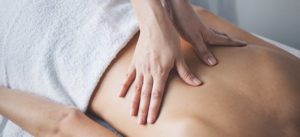
How To Stop Mid-Back Pain with Massage
The best way to relieve latissimus dorsi muscle pain is with massage combined with the stretches in this video. However, if those two things don’t work, you may want to schedule with a physical therapist or your healthcare provider or try some gentle yoga exercises. The cat-cow pose in yoga is good for temporarily relieving pain in your upper and middle back.
If the pain is new, you probably only need one or two massages to loosen your tight muscles and relieve stiffness. If you are having chronic pain, you will need 4-5 massages to relieve tension. Schedule online right now! We specialize in therapeutic massage to relieve back and neck pain.


